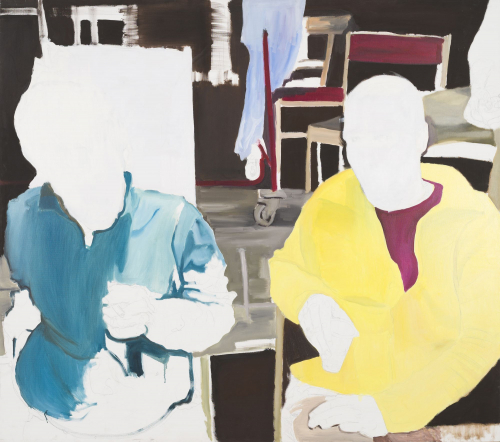KIM CORBISIER, who died tragically young at the age of 27, had a distinguished career ahead of her. Already during her university years, she received numerous grants (Amadeus Artists’ Scholarship, Erasmus, later the Strabag Artists’ Prize and a solo exhibition at Kogart) and her work was shown in group exhibitions in Moscow, Kiev and Marseilles. As an actress, she made it to Cannes as the leading actress in Gyorgy Palfi’s film I’m Not Your Friend. Her paintings are (in most cases) characterised by the simultaneous presence of the drawn and the painted surface. The artist took many photographs during her scholarships and travels, decoding the motifs, faces, streets and squares in the photographs into this language of omission, which emphasises emptiness and presence at the same time. In each of the pictures, we can recognise everyday scenes of a big city; crossroads with traffic lights, people returning home from shopping, beggars, shopping trolleys dragged by the homeless, figures standing in front of ATMs, street sweepers with handcarts, disabled people in wheelchairs. Most of the time, the focus is on faces; but in addition to the bored, withdrawn, hostile or even wondering expressions, facelessness itself is a recurring element. By making the figures in the painting look out of the picture, the artist and the observed, the observer and the viewer,enter into a complex, strangely tense relationship; the observed becomes the observer, looking not only at the artist but also at the witness of this virtual gaze, the recipient. The relationship between the drawn picture and the painted motifs is never logical or obvious – the photo-realistically detailed painting alternates with hurried, almost blurred blotches – and this system completely confuses the usual strategies of viewing the image. The strange dynamic between the whole and the part forces us into two ways of looking; we can never see the paintings in their entirety; we either look at the details or the whole.

